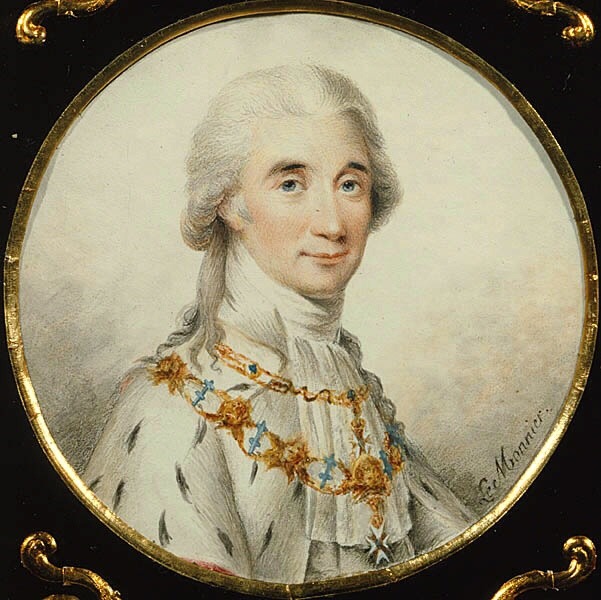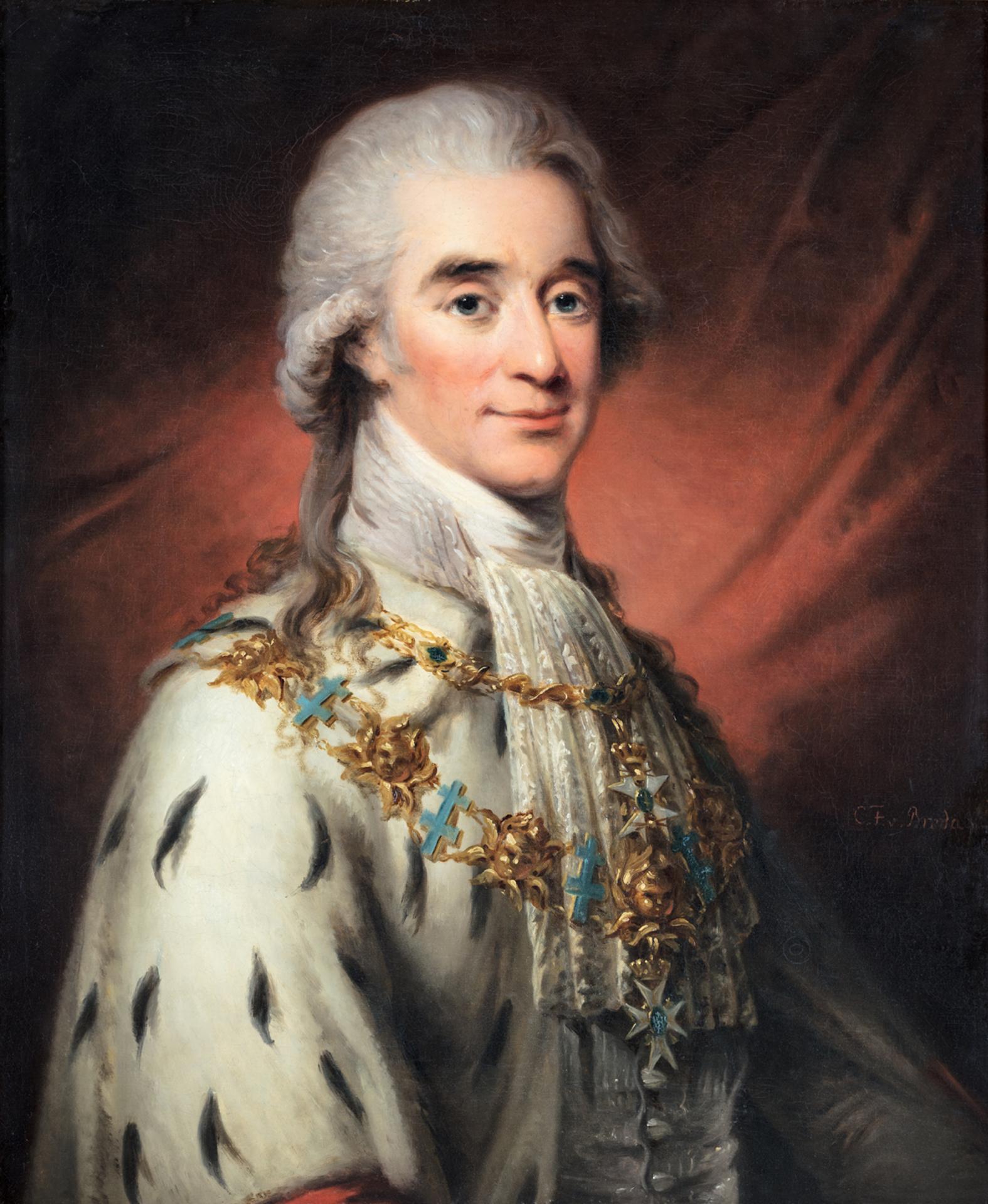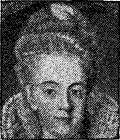 |
| Blanche of Namur Queen of Sweden & son Haakon VI |
Her lover was:
Bengt Algotsson.
Duke of Finland; Duke of Halland; Governor of Skane
". . . Magnus, surnamed 'Smel,' the flatterer or caresser, and his Queen, Blanche of Namur, are said both to have been infatuated with a youth named Bengt, that is Benedict, Algotsson, and to have resolved on disinheriting Prince Eric in order to make Bengt---already created Duke of Halland, and appointed Stadtholder of Scania---their heir. . . ." (Women of Europe in the Fifteenth and Sixteenth Centuries, Volume 1:6) [Bio2:Minata]
" . . . In 3.18 she mentions the elevation of another man, who might be Bengt Algotsson, Magnus's favorite and advisor, who was made duke of Finland and Halland, and governor of Skane. He was despised by the spiritual and aristocratic magnates for his cruelty and for his sequestration of church properties, and the Hanseats also thought he was acting against their interests. His policies led to Erik Magnusson's rebellion against his father in 1356, while all this time, in Denmark, Valdemar was waiting for his cur to exploit Magnus's weakness." (The Revelations of St. Birgitta of Sweden, Volume II, Volume 2: 11-12)
"One of the first recorded instances of same-sex love in Sweden is found in the revelations of Sankta Bridget. She accuses King Magnus Eriksson (ruled 1332-1363) of unnatural intercourse with a nobleman, Bengt Algotsson. Bridget accuses the king of 'loving men more than God or your own soul or your own spouse.' His queen was Blanche of Namur. Sankta Bridget was a powerful person in the political intrigues of these years. She had a political purpose in her way of presenting her religious ideas." (Encyclopedia of Gay Histories & Cultures: 852)
SWEDISH ARISTOCRATS.
Axel's personal and family background.
Fersen's physical appearance and personal qualities.
Fersen was dazzlingly good-looking.
4) Emilie de Geer.
5) Emily Cooper.
"One cannot know for certain, then, exactly, when Fersen became the Queen's lover, although it is suggested here that he did, either in the high summer of 1783 or, if his long absence (and the Queen's early pregnancy) was an inhibition, the following year...." (Marie Antoinette: The Journey: 110)
"Marie Antoinette and Swedish soldier Hans Axel von Fersen were both still teenagers when they met each other at a masquerade ball in Paris on January 30, 1771. . . At the ball, Marie Antoinette and Axel von Fersen took off their masks and talked to each other and that meeting began their friendship. She invited Axel von Fersen to Versailles and he quickly became one of her favorite guests. He traveled to Versailles as often as he could, but his military career soon transformed into a diplomatic post that took him to England for several years. . . Axel von Fersen remained in Paris throughout 1791 and in this year he and Queen Marie Antoinette grew closer, and some historians assert that this is when they became lovers. . . . " (A Love Story for Valentine's Day -- Marie Antoinette and Count Axel von Fersen)
"The young nobleman was, from the first, a prime favourite at the French court, owing partly to the recollection of his father's devotion to France, but principally because of his own amiable and brilliant qualities. Queen Marie Antoinette, who had first met Fersen when they both were age(d) 17 (January 1774), was especially attracted by the grace and wit of 'le beau' Fersen, who had inherited his full share of the striking handsomeness which was hereditary in the family. It is possible that Fersen would have remained at Versailles, following the American war, but he was commanded by his own sovereign, that at Pisa, that he desired him to join his suite. Fersen accompanied Gustav III of Sweden in his tour of Italy and France, and returned homw with him in 1784." (World Heritage Encyclopedia article @Project Gutenberg)
"Anna Soderhjelm, who credited Fersen with several mistresses he never had, states in her book that his affair with Eleonore began at the beginning of the Revolution in 1789 -- in other words, that he was unfaithful to Marie Antoinette quite systematically for more than two years. There is absolutely nothing in Fersen's papers to support this assertion; but then Sodehjelm also declares that he wrote only twice to the Queen during the summer of 1789, when as we have seen he was in touch with her constantly. In 1789 and 1790, despite their extremely difficult circumstances, Fersen and Marie Antoinette were happy together. He spent his time with her at Saint-Cloud whole Eleonore was in Paris or London, and he did not correspond with Eleonore at this time. Since he always wrote regularly to his platonic female France -- Mme de Matignon, Lady Elizabeth Foster and Mme de Korff -- he would certainly have written to her had their liaison already begun. The first letter to Eleonore Sullivan in his register in on 13 August 1791, several weeks after he had last seen her in Craufurd's salon in Brussels. It would seem that he had no intention of pursuing an affair with her, or he would most certainly have written to her regularly after they parted, as he did in later years." (I Love You Madly)
13) Constance-Wilhelmine von Ludolf, Comtesse de Saint-Priest (1752-1807)
Axel von Fersen Gallery
Carl Wilhelm Seele (1765-1803)
Gustaf Mauritz Armfelt Gallery
Adolf Fredrik Munck af Fulkila (1749-1831)
Son of: Lt. Col. Anders Erik Munck af Fulkila & Hedwig Juliana Wright.
His lovers were:
His lovers were:
1) Anna Sofia Ramstrom (1738-1786)
Maid-of-honour to Sophie Magdalena af Danmark, Queen of Sweden
2) Giovanna Bassi (1762-1834)
Italian ballerina; Prima ballerina of the Swedish Ballet
Daughter of: Angela Bassi, Italian ballerina.
Wife of: Peter Henrik Schon, a German-Swedish merchant, mar 1794
Swedish count, diplomat & statesman
Lieutenant General in Royal Swedish Army
Swedish Lord of the Realm
Marshal of the Realm 1801
Chancellor of Uppsala University 1799
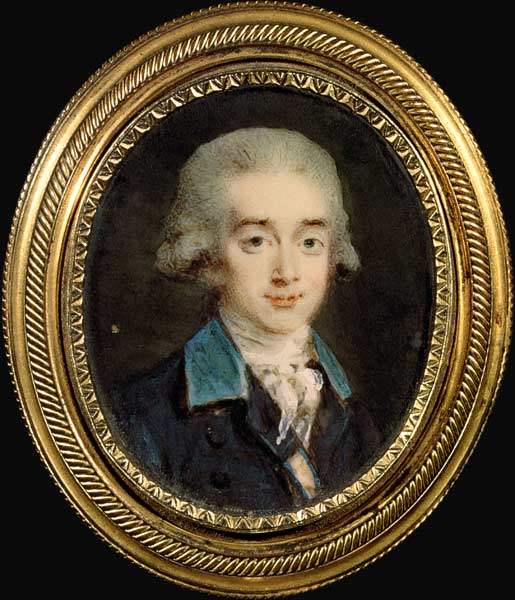 |
| Axel von Fersen the Handsome Fersen @Art Prints on Demand |
"On New Year's Day 1774 a young Swedish nobleman, Count Axel Fersen, made his first appearance at Versailles. Born on 4 September 1755, he was two months older than Marie Antoinette; he had been making the Grand Tour of Europe for several years, in the course of which he had met her brother, the Archduke Leopold, in Florence. Fersen spoke fluent French, in which language he wrote, as well as Italian, German and English. He was the son of an aristocratic mother and the Marshal of the Armies, 'the richest man in Sweden,' supposedly with £5000 a year, to the £3000 of the next-richest man. . . ." (Marie Antoinette: The Journey: 110)
Axel was the eldest of four children of the lovely, tall and slender Sophia de la Gardie, daughter of one of Sweden's ruling families, which had served king and country ever since it arrived from Languedoc. She had done her best by her brood as she flitted from the castles of Maalsaker to Ljung, from Lofstad to Steininge or to Stockholm, where she was Mistress of Robes. Axel's father, Frederick Axel of Fersen, was, during the reign of King Adolphus Frederick, the most powerful man in Sweden, intellectual, intelligent, and liberal, qualities not inherited in the like degree by his two boys and two girls." (Under the Golden Lilies: 252)
"The Fersen family was of old Livonian origin, and had made its mark in Swedish history in the successive reigns of Christina, Charles X, and Charles XI. Three of its members were distinguished in the Council of the kings, and were made senators, three in the army; each of the latter became a Field Marshal." (A Friend of the Queen: 17)
Fersen's physical appearance and personal qualities.
"Count Fersen, who was then (1774) in his nineteenth year, attracted attention by his manly beauty and fine expression, although the latter was rather cold; but, as Tilly remarks, 'Women do not dislike impassive faces when they may hope to animate them.' The young Swede's countenance was of this kind. His large, limpid eyes, shaded by thick black lashes, had the calm outlook of the northern people, the impress of whose melancholy he bore; but this did not always or completely conceal the warmth of a generous nature quite capable of passion. He had a small mouth, with expressive lips; a straight, well-formed nose; the fine, thin nostrils that are sometimes a sign of shyness, or, at least, the impress of nobility and simplicity; his attitude was in every respect that of a true gentleman." (A Friend of the Queen: 9)
"In addition to his native tongue, the impossibly handsome teen, tall and slender, with a narrow face, soft brown hair, strong dark brows, and hazel eyes that alternately appeared blue, green, or brown, spoke fluent French, Italian, German, and English. These qualities, combined with his melancholy aura, and later his military heroism, made him the ultimate chick magnet. Georgiana, Duchess of Devonshire, praised his 'most gentleman-like air.' Another female acquaintance found him 'a burning soul with a shell of ice.'. . . ." (Royal Romances: Titillating Tales of Passion and Power in the Palaces of Europe)
Admirers among his fellow men.
But he had admirers among his own gender as well. The comte de Tilly considered Fersen 'one of the best-looking men I ever saw,' despite, or perhaps because of, his 'icy countenance,' which women undoubtedly hoped to melt. The duc de Levis described Count von Fersen as looking like the hero of a novel---but not a French one, as the Swede was too serious and discreet. Nor was he foppish or fey, like so many of his English and French counterparts. And Marie Antoinette's famed freseur, Leonard Hautier, described the count as being like Apollo---someone who excited amorous feelings in women and jealous ones in men." (Royal Romances: Titillating Tales of Passion and Power in the Palaces of Europe)
 |
| Axel von Fersen the Younger |
" . . . Fersen was dazzlingly good-looking. He was tall and slim, with a narrow face, intense dark eyes beneath strongly marked eyebrows and a slightly melancholy air. These were romantic looks, which caused the Duc de Levis to write that he looked like the hero of a novel---but not a French novel since Fersen was too serious. Another part of his attraction was what Georgiana Duchess of Devonshire called 'the most gentleman-like air'; the Count was always extremely concerned to present an elegant appearance." (Marie Antoinette: The Journey: 110)
His manly beauty & fine expression attracted attention.
"Count Fersen, who was then in his nineteenth year, attracted attention by his manly beauty and fine expression, although the latter was rather cold; but, as Tilly remarks, 'Women do not dislike impassive faces when they may hope to animate them.' The young Swede's countenance was of this kind. His large, limpid eyes, shaded by thick black lashes, had the calm outlook of the Northern people, the impress of whose melancholy he bore; but this did not always or completely conceal the warmth of a generous nature quite capable of passion. He had a small mouth, with expressive lips; a straight well-formed nose; the fin, thin nostrils that are sometimes a sign of shyness, or, at least, of caution and reserve. His manners ore the impress of nobility and simplicity; his attitude was in every respect that of a true gentleman." (A Friend of the Queen: 9)
An adulterous womanizer & bon vivant.
An adulterous womanizer & bon vivant.
" . . . An adulterous womanizer and bon vivant to the end of his days, a deeply conservative royalist who refers to the commoners only as "rabble" (shades of Nicolas Sarkozy), his blinkered self-righteousness gives a wondrously lopsided view of the French Revolution. He is acute on the diplomatic intrigues and the mass insanity of crowds but scarcely mentions the starvation and dire straits of the populace in a country crushed by debt and taxes — in large part because of the king's decision to militarily support the American revolutionaries. After the executions, Fersen returned to his rich estates and government career in Sweden. Here, a pure work of fiction might wind down with remembrance, philosophizing and old age. But history chose another ending: In 1810 in Stockholm, Fersen himself is killed by an outraged mob. . . ." (LA Times)
"It is worth digressing a little from the correspondence to rectify the entirely false image often presented of Fersen as a libertine who had scores of casual mistresses while he venerated the Queen of France from afar, never daring to touch her for fear of contaminating the royal blood line. This is hardly a credible hypothesis. Royal liaisons were almost de rigueur in his family; he was himself descended from the kings of Sweden by just such a liaison. For him, princesses were made of flesh and blood; they were not untouchable idols. The Comte de Bouille, who passed into the service of Sweden after the French Royal Family's arrest at Varennes in 1791, remarked after seeing the Fersen family at Stockholm that they 'always had to mix grandeur into their love affairs'. He had no doubt about the nature of Axel von Fersen's relationship with the Queen of France. 'It must be said, in praise of this favourite, that the decency and inalterable calmness of his bearing could never give rise to the most active malice. His devotion to the Queen, aided by his phlegmatic nature, guaranteed him from becoming intoxicated by his success, which he justified by unfailing prudence and discretion. He was such indeed as a queen's lover should always be.'" (I Love You Madly: Marie Antoinette & Count Fersen)
"It is worth digressing a little from the correspondence to rectify the entirely false image often presented of Fersen as a libertine who had scores of casual mistresses while he venerated the Queen of France from afar, never daring to touch her for fear of contaminating the royal blood line. This is hardly a credible hypothesis. Royal liaisons were almost de rigueur in his family; he was himself descended from the kings of Sweden by just such a liaison. For him, princesses were made of flesh and blood; they were not untouchable idols. The Comte de Bouille, who passed into the service of Sweden after the French Royal Family's arrest at Varennes in 1791, remarked after seeing the Fersen family at Stockholm that they 'always had to mix grandeur into their love affairs'. He had no doubt about the nature of Axel von Fersen's relationship with the Queen of France. 'It must be said, in praise of this favourite, that the decency and inalterable calmness of his bearing could never give rise to the most active malice. His devotion to the Queen, aided by his phlegmatic nature, guaranteed him from becoming intoxicated by his success, which he justified by unfailing prudence and discretion. He was such indeed as a queen's lover should always be.'" (I Love You Madly: Marie Antoinette & Count Fersen)
His lovers were:
1) Amalie Frederika von Baden.
 |
| Eleonore Sullivan Lady Crawford @ Timblr |
2) Eleonore Sullivan (1750-1833)
Italian adventuress, courtesan & royal mistress
Lover in 1789-1799.
Daughter of: A tailor in the Republic of Lucca.
Wife of:
1. Martini, Dancer in a travelling theater company
2. Sullivan, an Irish officer.
Intermittent love affair.
" . . . Mme Sullivan was mistress of wealthy Scotsman Quintin Craufurd. Fersen's diary shows that it was during preparations for the Royal Family's escape that he began a liaison with this femme fatale, which continued intermittently for several years. Craufurd had been in England since some time in May, and during the week preceding the Royal Family's escape, Fersen's notes in Swedish in his diary that he 'stayed there' three times after going to see Eleonore. In later years he is less cryptic, writing 'slept' (couche in French) to indicate the nights he spent with her. They were remarkably infrequent, in fact, since they are only ever noted during Craufurd's rare absences. In June 1791 Fersen also notes his visits 'chez Elle' -- Marie Antoinette -- at the Tuileries, without always recording the time that he left her, which could indicate that he also 'stayed' with her. On 16 June he arrived 'chez Elle' at 6:30 p.m., and gives no more details; normally he expands on the weather, his meals, when he returned home. The following day starts simply with 'to Bondy and Bourget'." (I Love You Madly)
" . . . Around April 1789, Eleonore became Fersen's lover, although she remained involved with Craufurd, who for the next several years would have no inkling of her affair. . . ." (Royal Romances: Titillating Tales of Passion and Power in the Palaces of Europe)
"Fersen had a mistress during the years that he was friendly with the Queen. This was the beautiful Italian adventuress, Eleanor Sullivan, who was a 'kept woman'. . . ." (Sanderson)
"Fersen's connexion with Crawford was produced through a beautiful lady, whom both gentlemen passionately adored; and this fact speaks against any amour between the queen and Fersen. The name of the celebrated beauty was Franchini; she was a native of Lucca, and appeared at the court of Stuttgart as a danseuse, where she gained the favour of Duke Charles. Her three children were ennobled by the name of Franquemont, and one daughter married Count d'Orsay, and was the mother of the celebrated dandy of that name and of the Duchess de Guiche-Grammont. The Franchini, after leaving the court of Stuttgardt (sic), proceeded to the East Indies, where she married a gentleman of the name of Sullivan, appeared under that name in Paris, and eventually formed a liaison with Quinti Crawford, who kept up a brilliant establishment in Paris. It was a Crawford's house that Count Fersen formed her acquaintance." (Remarkable Adventurers and Unrevealed Mysteries, Vol 1: 216)
2. William Cavendish, 5th Duke of Devonshire (1748-1811).
"However, the Queen was not without rivals even at the start of her relationship with Fersen. It was during his voyage in Italy with Gustav III that he met Lady Elizabeth Foster, separated from her husband and children and in exile because of the scandal caused by her relationship with the Duke of Devonshire, husband of her best friend, Duchess Georgiana. Their menage a trois would fuel gossip in England until Georgiana's death; their life together was punctuated by the continental journeys of the two women to give birth in secret to their illegitimate children. Marie-Antoinette's close friend Mme de Polignac wa also close to Georgiana and Lady Elizabeth, and she supervised the education of these children, who were placed with families in France under false names. The Queen had received Lady Elizabeth at Versailles, in the process acquiring another fervent English admirer. Lady Elizabeth talks of Marie-Antoinette in her letters to Fersen during the Revolution as 'our unhappy friend' and 'she whom we love'; despite what has been said and surmised, she never shared Fersen's favours with the Queen." (I Love You Madly)
"It was certainly true that Lady Elizabeth Foster fell for Fersen and tha he was drawn to her beauty and sympathized with her predicament; but they were never lovers. Although Lady Elizabeth praised the 'very, very amiable' Fersen in her letters to Georgiana, their physical contact extended to a single kiss on the cheek one evening at a ball when she was in a melancholy mood. The following day he gently let her down in case shad been expecting a declaration of love. 'Today we all went to a party. He drove by me; he then expressed himself as fearful of having offended me, but without urging any sentiment but respect & tenderest attachment; he only said he hoped I could do justice to his sentiments; they were such as could never change.' That evening, although they were alone for a few minutes (one feels sure that Lady Elizabeth had contrived it), Fersen did not seize the occasion to kiss her or even take her hands. 'I do not pretend that I shall not regret him,' she wrote to Georgiana. 'He is in every respect amiable & estimable; but you live in my heart, dearest. I confess my weaknesses so you teach me to correct them.' The following year she wrote in her diary that while she was 'attached' to Fersen, she had never even been tempted for a moment to do what she regretted doing with the Duke of Devonshire." (I Love You Madly)
4) Emilie de Geer.
5) Emily Cooper.
 |
| Hedwig Elisabeth of Holstein-Gottorp |
6) Hedwig Elisabeth von Holstein-Gottorp (1759-1818)
Queen of Sweden
Daughter of: Friedrich August I von Holstein-Gottorp & Ulrike Friederike Wilhelmine von Hessen-Kassel.
 |
| Karl XIII of Sweden @ Nationalmuseum, Stockholm |
Wife of: Karl XIII of Sweden (1748-1818)
" . . . He [Axel] is famous as a lover and had affairs with various women, especially the Italian-born adventuress Eleanore Sullivan, and the Royal Duchess Hedwig Elizabeth Charlotte of Holstein-Gottorp, married to the future King Charles XIII of Sweden. It is not known when her affair with Axel von Fersen occurred, it is only known that she wished to resume it when Fersen returned to Sweden after the death of Marie Antoinette and that Fersen refused to do so. King Charles was in his turn the lover of the cousin of Axel, Augusta von Fersen." (World Heritage Encyclopedia article @ Project Gutenberg)
7) Madame de Brancas.
8) Madame de Korff.
9) Madame de Matignon.
Daughter of: Breteuil.
10) Mademoiselle Hunter.
11) Marianna la Grua.
Wife of: Spanish Ambassador to Swedish Court.
"But, above and beyond ll, the young Dauphiness shone with a radiant lustre. A young future queen by the right of her marriage, she already wore the crown by right of her beauty. 'Let us picture to ourselves a dazzlingly fair complexion, in which the tints of the earliest summer roses are blended; large, prominent eyes of azure blue; a forehead crowned with luxuriant fair hair, bearing the impress of majesty and frankness, gave the noblest expression to her whole countenance. This was enhanced by the perfect shape of her nose. The only defect in the face of the lovely Princess was the slight protrusion of the lower lop; but this was a distinctive feature of the house of Austria, and reminded all that she was the daughter of Maria Theresa. Her figure was shapely and tall for her age; her neck and bust were perfect; her hands beautiful; her legs and feet worthy of the Venus de Medicis. Her movements were easy and graceful, her whole person was delightfully harmonious, so that none could behold her without admiration, because she was always desired to please all whom she saw.'" (A Friend of the Queen: 14)
First encounter.
First encounter.
"Count Axel de Fersen met Marie-Antoinette for the first time at a masked ball at the Opera in 1774. He made a strong impression on the queen at the time and she exclaimed “He’s an old acquaintance” when she met him again at the French court four years later. After moving to Versailles, in 1779 he joined the circle of intimate friends of the queen and gained her backing. He thus obtained the post of colonel of a German infantry troop sent to fight with the rebels in the American War of Independence in 1780. After his return from America and thanks to the intercession of the queen and of Gustavus III, king of Sweden, he was appointed colonel of the Royal Swedish regiment in 1783. He divided his time between the court and his regiment."(Chateau de Verseilles)
 |
| Marie Antoinette, her children, Axel Fersen and Madame de Tourzel as seen in L'Enfant Roi (1922) |
First meeting at a ball.
"For close upon four years Marie Antoinette had been Dauphiness, passing her time in the surface-stir and profound monotony of a future queen's existence, in, but not of the Court, where Madame du Barry reigned, and where Louis XV, then near his death, could barely drag himself about, when a trifling event, whose future consequences no one, not even the parties interested, foresaw, took place at a ball given by her on the 10th of January 1774. The ambassador from Sweden to the Court of France presented to the Dauphiness one of his countrymen, a young Swede, who was travelling to complete his education---Count John Axel Fersen. The daughter of Maria Theresa could not fail graciously to receive the young foreigner, whose presence promised t dispel a little of the dullness of the ceremonial entertainments prescribed by etiquette; especially as the personal merit of this foreigner, the bearer of an illustrious name, whose renown had reached France, justified his welcome." (A Friend of the Queen: 8)
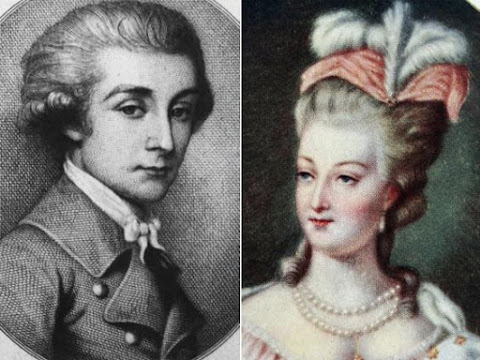 |
| @Tweed and the Gentlemen's Club |
"Marie Antoinette and Swedish soldier Hans Axel von Fersen were both still teenagers when they met each other at a masquerade ball in Paris on January 30, 1771. . . At the ball, Marie Antoinette and Axel von Fersen took off their masks and talked to each other and that meeting began their friendship. She invited Axel von Fersen to Versailles and he quickly became one of her favorite guests. He traveled to Versailles as often as he could, but his military career soon transformed into a diplomatic post that took him to England for several years. . . Axel von Fersen remained in Paris throughout 1791 and in this year he and Queen Marie Antoinette grew closer, and some historians assert that this is when they became lovers. . . . " (A Love Story for Valentine's Day -- Marie Antoinette and Count Axel von Fersen)
"The young nobleman was, from the first, a prime favourite at the French court, owing partly to the recollection of his father's devotion to France, but principally because of his own amiable and brilliant qualities. Queen Marie Antoinette, who had first met Fersen when they both were age(d) 17 (January 1774), was especially attracted by the grace and wit of 'le beau' Fersen, who had inherited his full share of the striking handsomeness which was hereditary in the family. It is possible that Fersen would have remained at Versailles, following the American war, but he was commanded by his own sovereign, that at Pisa, that he desired him to join his suite. Fersen accompanied Gustav III of Sweden in his tour of Italy and France, and returned homw with him in 1784." (World Heritage Encyclopedia article @Project Gutenberg)
"Anna Soderhjelm, who credited Fersen with several mistresses he never had, states in her book that his affair with Eleonore began at the beginning of the Revolution in 1789 -- in other words, that he was unfaithful to Marie Antoinette quite systematically for more than two years. There is absolutely nothing in Fersen's papers to support this assertion; but then Sodehjelm also declares that he wrote only twice to the Queen during the summer of 1789, when as we have seen he was in touch with her constantly. In 1789 and 1790, despite their extremely difficult circumstances, Fersen and Marie Antoinette were happy together. He spent his time with her at Saint-Cloud whole Eleonore was in Paris or London, and he did not correspond with Eleonore at this time. Since he always wrote regularly to his platonic female France -- Mme de Matignon, Lady Elizabeth Foster and Mme de Korff -- he would certainly have written to her had their liaison already begun. The first letter to Eleonore Sullivan in his register in on 13 August 1791, several weeks after he had last seen her in Craufurd's salon in Brussels. It would seem that he had no intention of pursuing an affair with her, or he would most certainly have written to her regularly after they parted, as he did in later years." (I Love You Madly)
13) Constance-Wilhelmine von Ludolf, Comtesse de Saint-Priest (1752-1807)
Daughter of Wilhelm Moritz Heinrich von Ludolf, Ambassador of Naples in Constantinople, and Catherine Chabert.
 |
Francois-Emmanuel de Guignard Count of Saint-Priest @Wikipedia |
Wife of: Francois-Emmanuel de Guignard, Comte de Saint-Priest (1735-1821), mar 1774
"Axel Fersen was involved with a number of women during the course of his life. Not all of them let go gracefully. The comtesse de Saint-Priest was one of them. Evidently, she was another of Fersen's mistresses, and not happy at being replaced by Eleonore Sullivan. She wrote to him, "I've been seeing much of Madame de Canillac recently. I don't know why but I'm sure she's been your mistress, too. I remember your telling me that she had a lover nobody suspected and that he was English - but I am certain that he was a lovable Swede... I dined with the Prince of Wales the other night, my dear Count. He told me that when he knew you you were as good-looking as Lord Randon. But all the women in the room said that you had greatly altered and had become very ugly. After that charming overture nobody spoke of you anymore... The Prince then told us that he had once seen Madame Sullivan do a dance with castenets with the Spanish Ambassador. He said that she looked so ridiculous he thought he'd split his sides laughing. He didn't exactly sing Madame Sullivan's praises. He thinks she looks like an apple vendor and he went on to tell us all sorts of unpleasant things about her.'" (Important to Madeleine)
"Axel Fersen was involved with a number of women during the course of his life. Not all of them let go gracefully. The comtesse de Saint-Priest was one of them. Evidently, she was another of Fersen's mistresses, and not happy at being replaced by Eleonore Sullivan. She wrote to him, "I've been seeing much of Madame de Canillac recently. I don't know why but I'm sure she's been your mistress, too. I remember your telling me that she had a lover nobody suspected and that he was English - but I am certain that he was a lovable Swede... I dined with the Prince of Wales the other night, my dear Count. He told me that when he knew you you were as good-looking as Lord Randon. But all the women in the room said that you had greatly altered and had become very ugly. After that charming overture nobody spoke of you anymore... The Prince then told us that he had once seen Madame Sullivan do a dance with castenets with the Spanish Ambassador. He said that she looked so ridiculous he thought he'd split his sides laughing. He didn't exactly sing Madame Sullivan's praises. He thinks she looks like an apple vendor and he went on to tell us all sorts of unpleasant things about her.'" (Important to Madeleine)
14) Yekaterina Nikolaievna Mentchikova.
Axel von Fersen Gallery
Pomeranian merchant.
His lover was:
"In 1789, the young royal secretary Carl Wilhelm Seele was her lover: Seele was called l'Adonis de la Roture and known for changing clothes three or four times a day to 'coming, going and riding to demonstrate his beauty." (Wikipedia)
 |
| Charlotta Eckerman |
Charlotta Eckerman (1759-1790)
Swedish singer & courtesan.
Her lovers were:
1) Baron van der Bork, Dutch ambassador to Sweden.
2) Gustaf Mauritz Armfelt.
3) Carl XIII of Sweden
Lover in 1779-1781
Personal & Family Background: Charlotta was the daughter of Bengt Edvard Eckerman, a cavalry captain of the Royal Scanian Hussars, and the writer Catharina Ahlgren. (Wikipedia)
Fredrik Sparre (1731-1803)
His lover was:
Gustaf Mauritz Armfelt (1757-1814)
Finnish & Swedish courtier & diplomat.
"In connection with Gustav III's journey to the resort town of Spa in 1789, the young baron Gustaf Mauritz Armfelt (175701814) became the principal favourite in the immediate circle of the king. Like Gustav's former closest confidant, the crown equerry Adolf Freri.
His lovers were:
"Four years Anna-Dorothea's senior, Gustav d'Armfelt was as big a man as Peter, but his poor proportions---his burly, broad-shouldered body was too big for his short legs---hardly comprised the heroic specifications for dreams. He was handsome, no doubt, when he was younger, but dissipation was already taking its toll of his rugged good looks. Yet Anna-Dorothea found the attentions of the famous philanderer flattering, and in no time, he was her favorite escort. D'Armfelt was excellent company, and his conversation, larded with what he knew and had seen firsthand and spiced with names of international repute, opened a welcome window onto Western Europe for Anna." (By Influence & Desire: 42)
2) Mademoiselle L'Eclair.
 |
| Magdalena Charlotta Rudenschold, 1823 |
3) Magdalena Rudenschold (1766-1823)
" . . . Armfelt's chief intermediary at Stockholm was his mistress, the frivolous but amiable Magdalena Rudenskild, through whom he hoped to persuade the young king to write a letter to Catherine II, inviting cooperation. The government discovered the plot by opening Armfelt's letters. . . (T)he other conspirators were arrested in Sweden at the end of 1792, and put upon their trial. Armfelt, Ehrensvard, and Magdalena Rudenskold were condemned to death. . . The death sentences were indeed remitted in the cases of Ehrensvard and Magdalena Rudenskold, but the unfortunate lade was pilloried in the great square of Stockholm, to the intense indignation of the public, who regarded her degrading punishment as a mean act of vengeance on the part of the rejected lover, it being notorious that the duke-regent had solicited the lady's favours in vain some years before. . . ." (Bain: 383)
" . . . D'Armfelt's mistress, Madeleine de Rudenschold, paid a pretty krona for remaining faithful to the absent d'Armfelt. Wild with jealousy, the scorned regent had her convicted on a false charge. She spent half a day in the public pillory on Stockholm's main square before being exiled to a small Baltic island." (By Influence & Desire: 42)
Gustaf Mauritz Armfelt Gallery
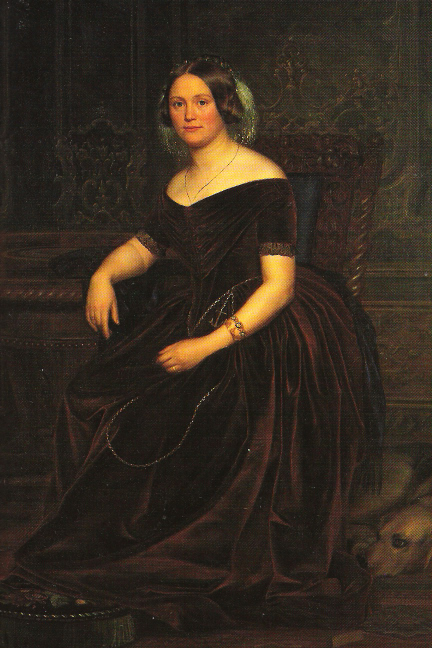 |
| Louise-Christine Rasmussen Countess Danner |
Louise-Christine Rasmussen, Countess Danner (1815-1874)
Her lovers were:
1) Carl Berling.
2) Frederik VII of Denmark
Lover in 1830s to 1840s
Sophie von Fersen
|
Sophie von Fersen (1757-1816)
Swedish noble & lady-in-waiting.
She married Adolf Ludwig Piper (in 1777).
 |
| Ulrik Frederik Gyldenlove |

_portrait.jpg/250px-Giovanna_Bassi_(1762-1834)_portrait.jpg)





